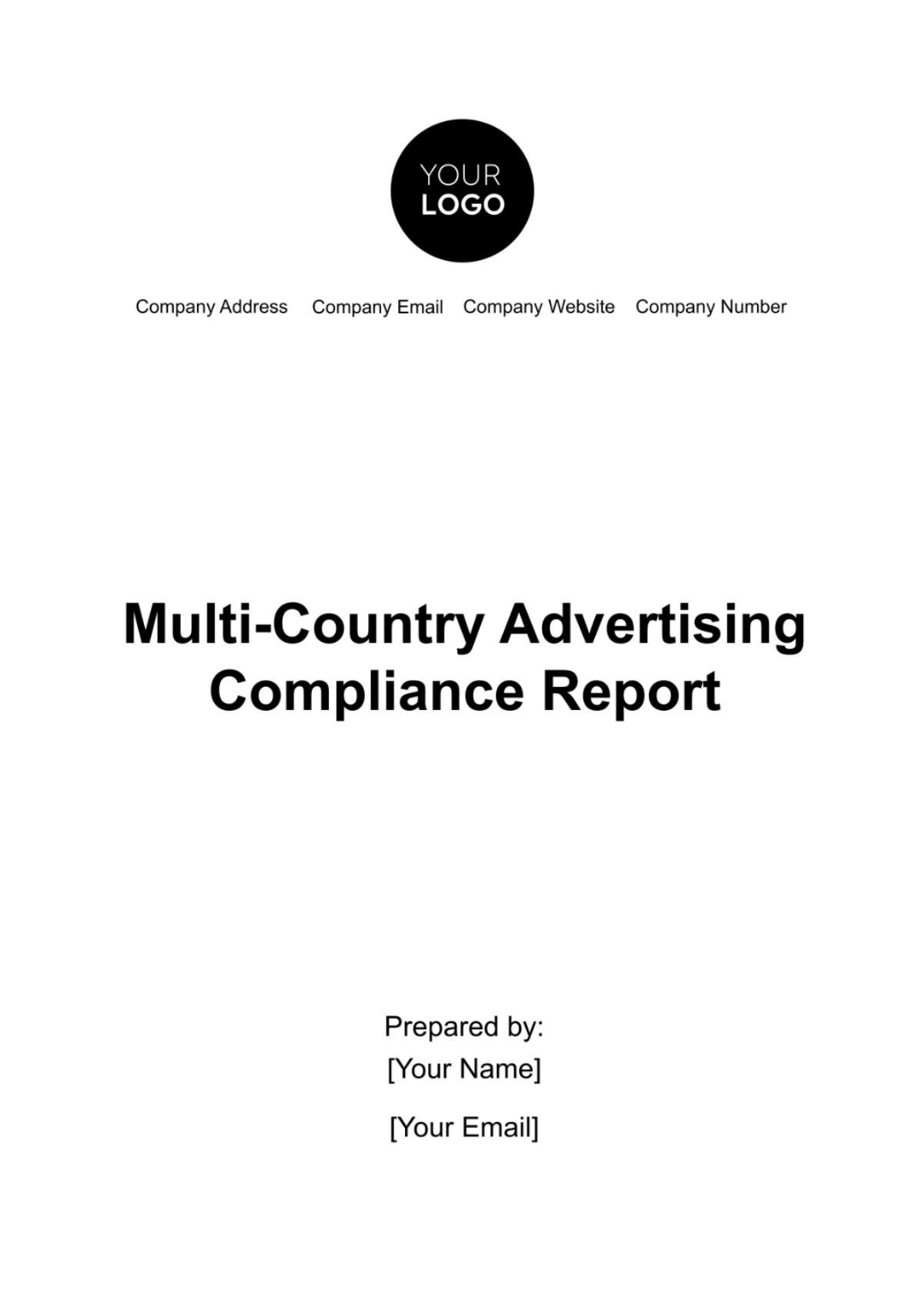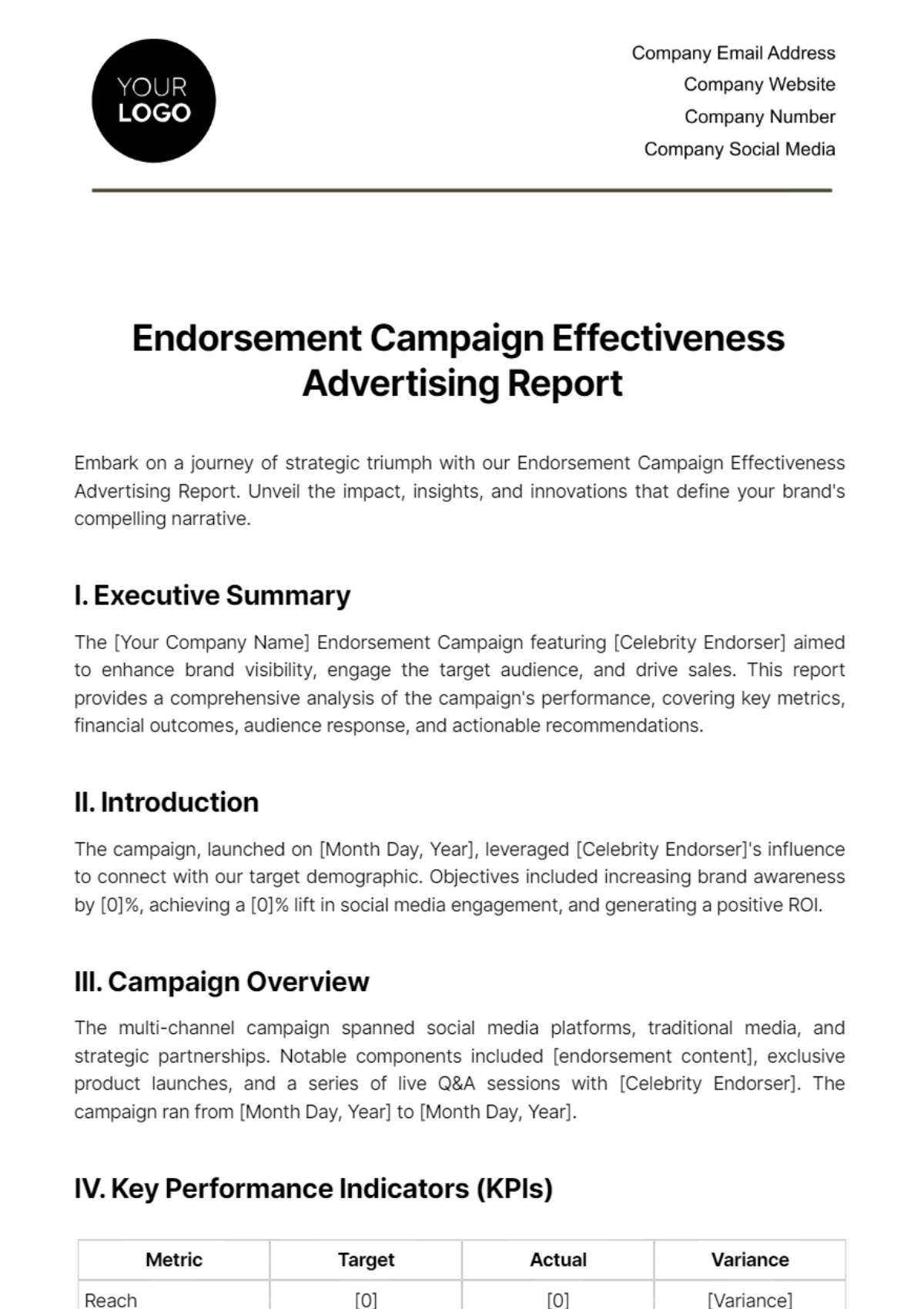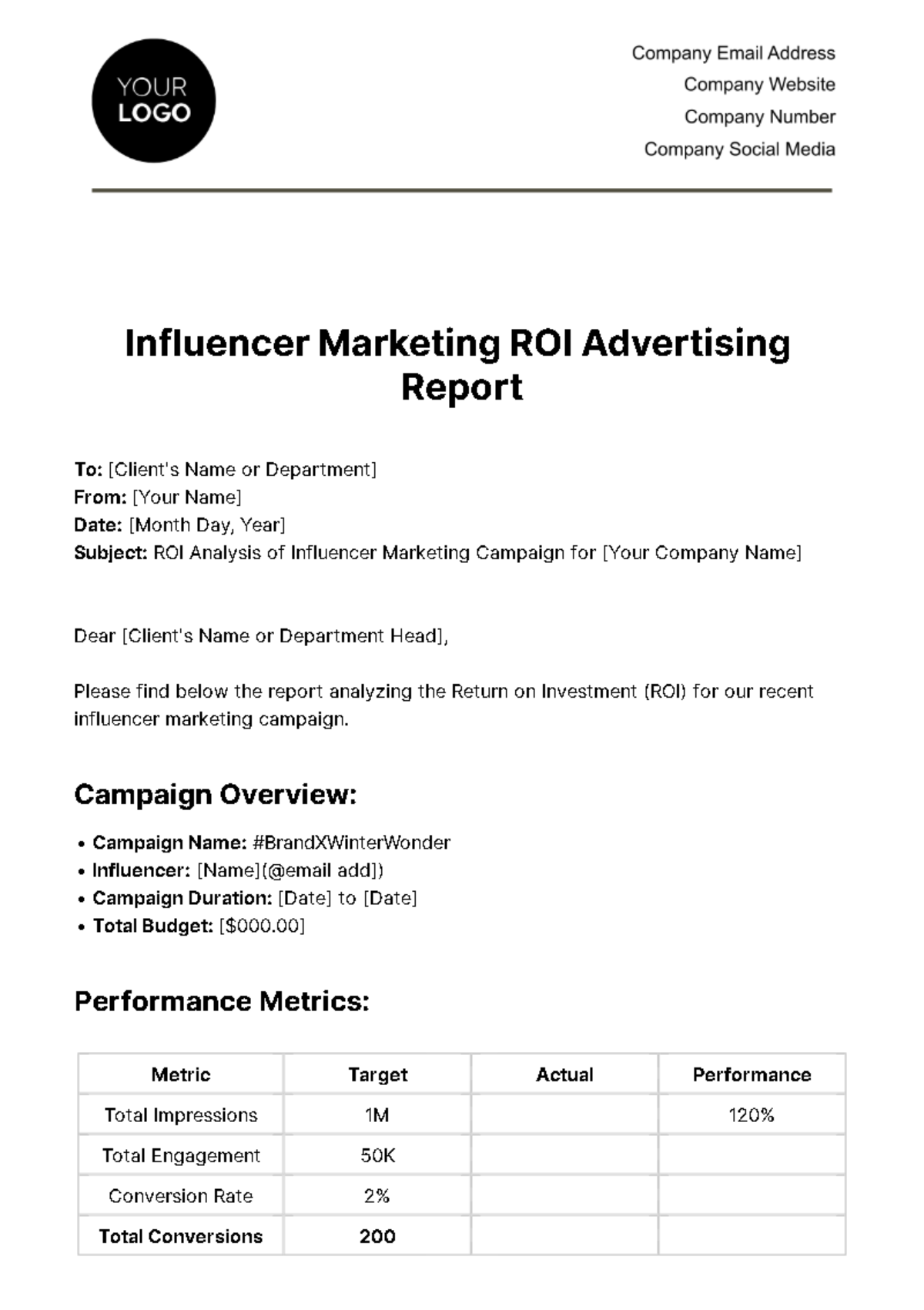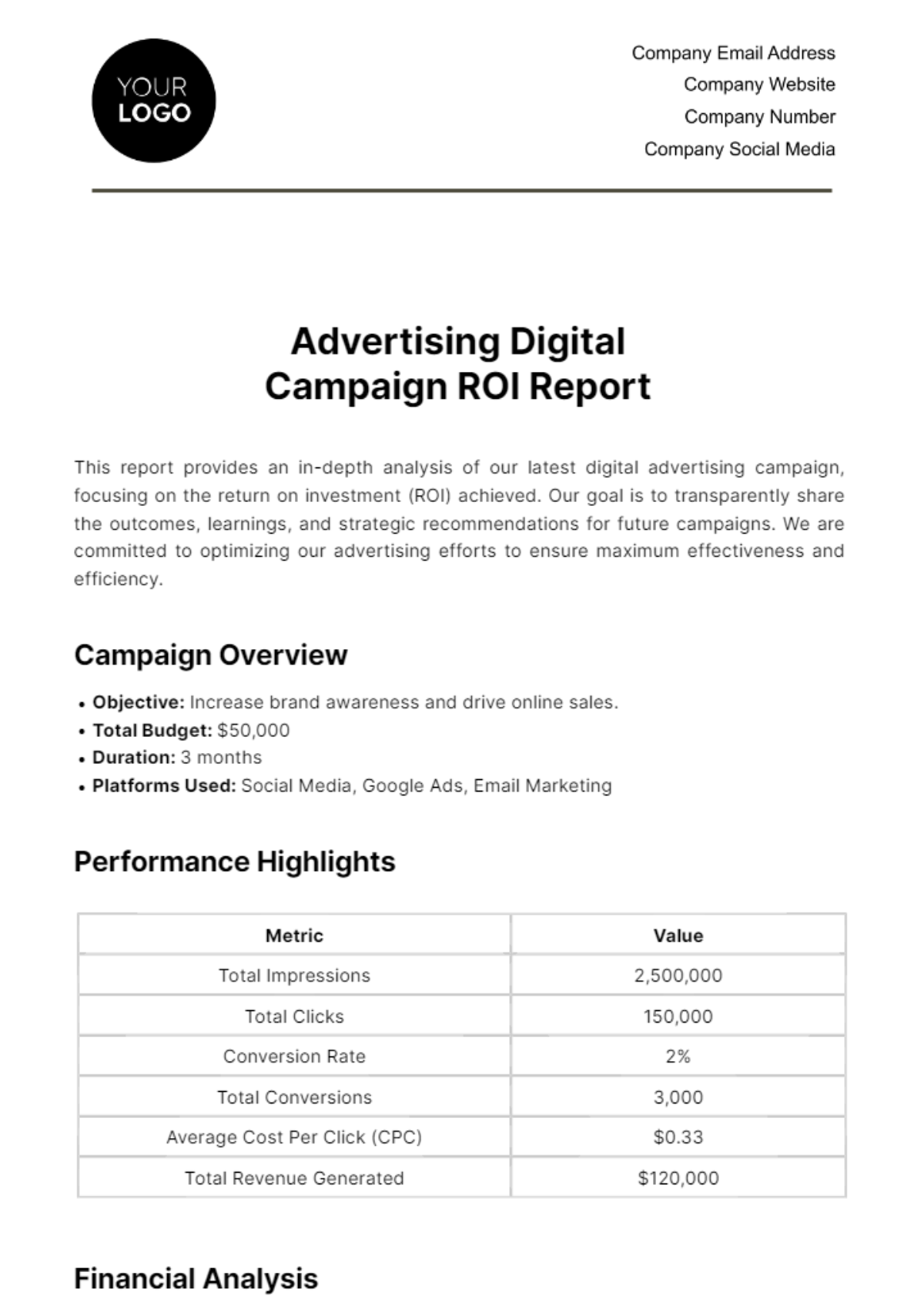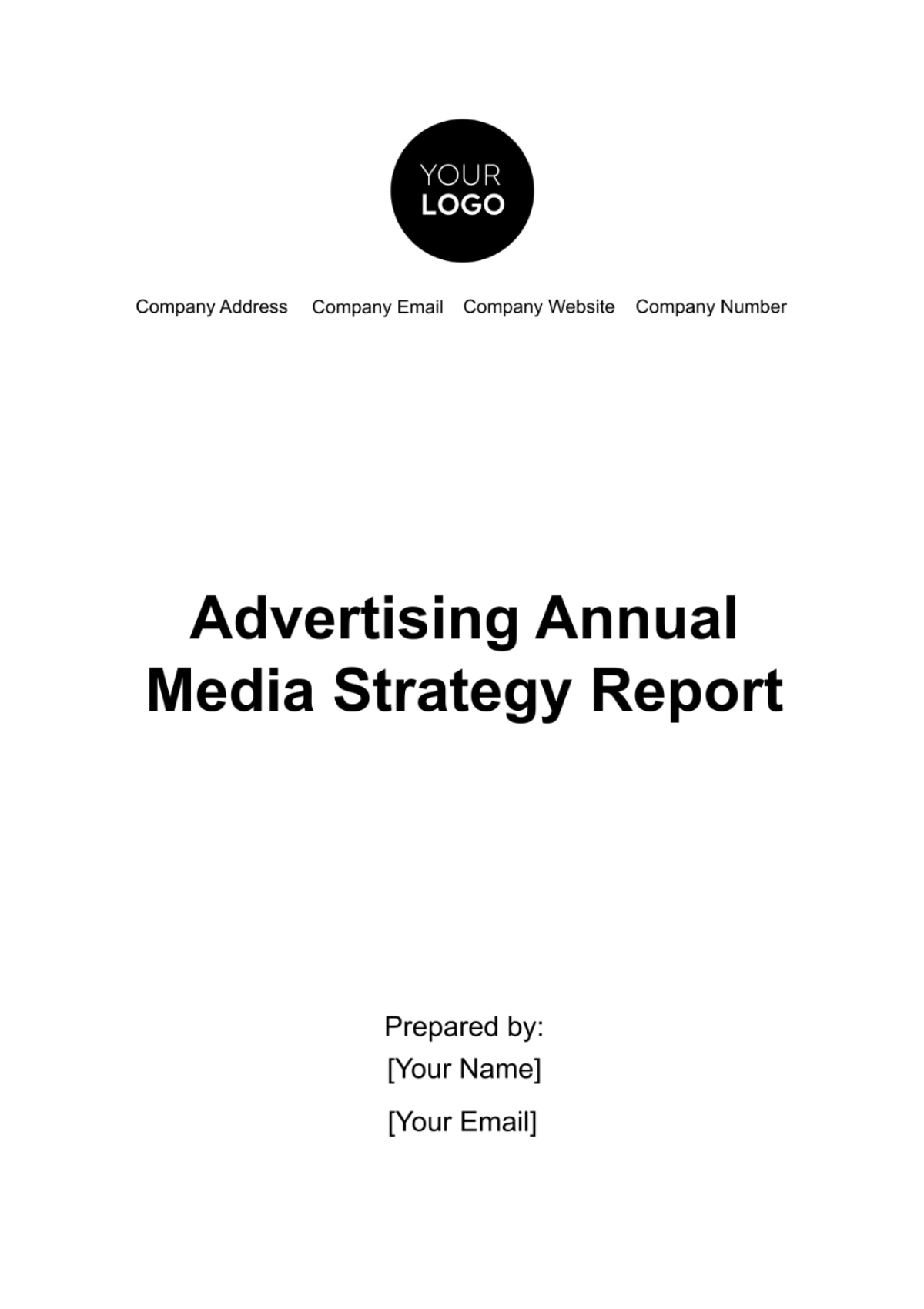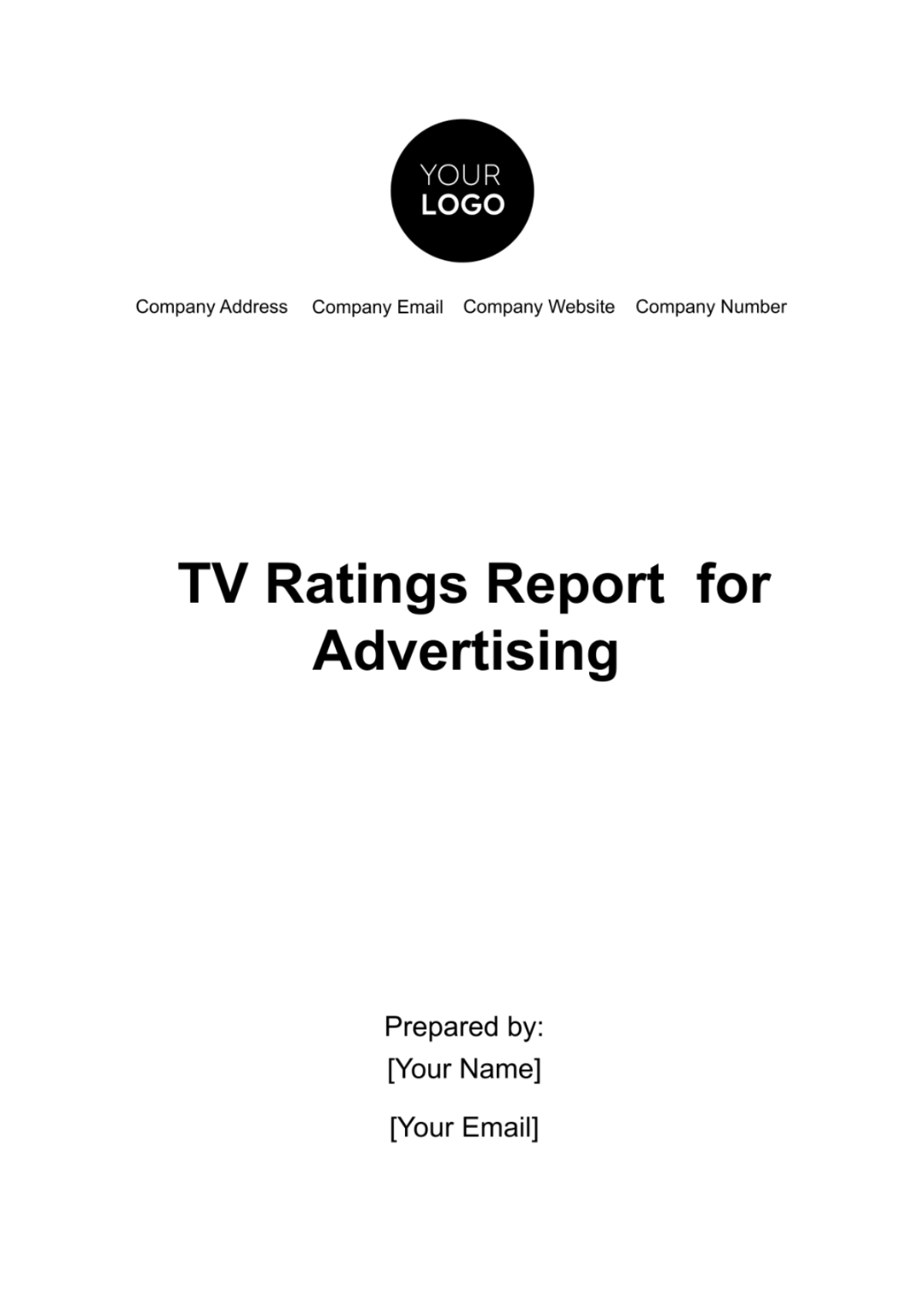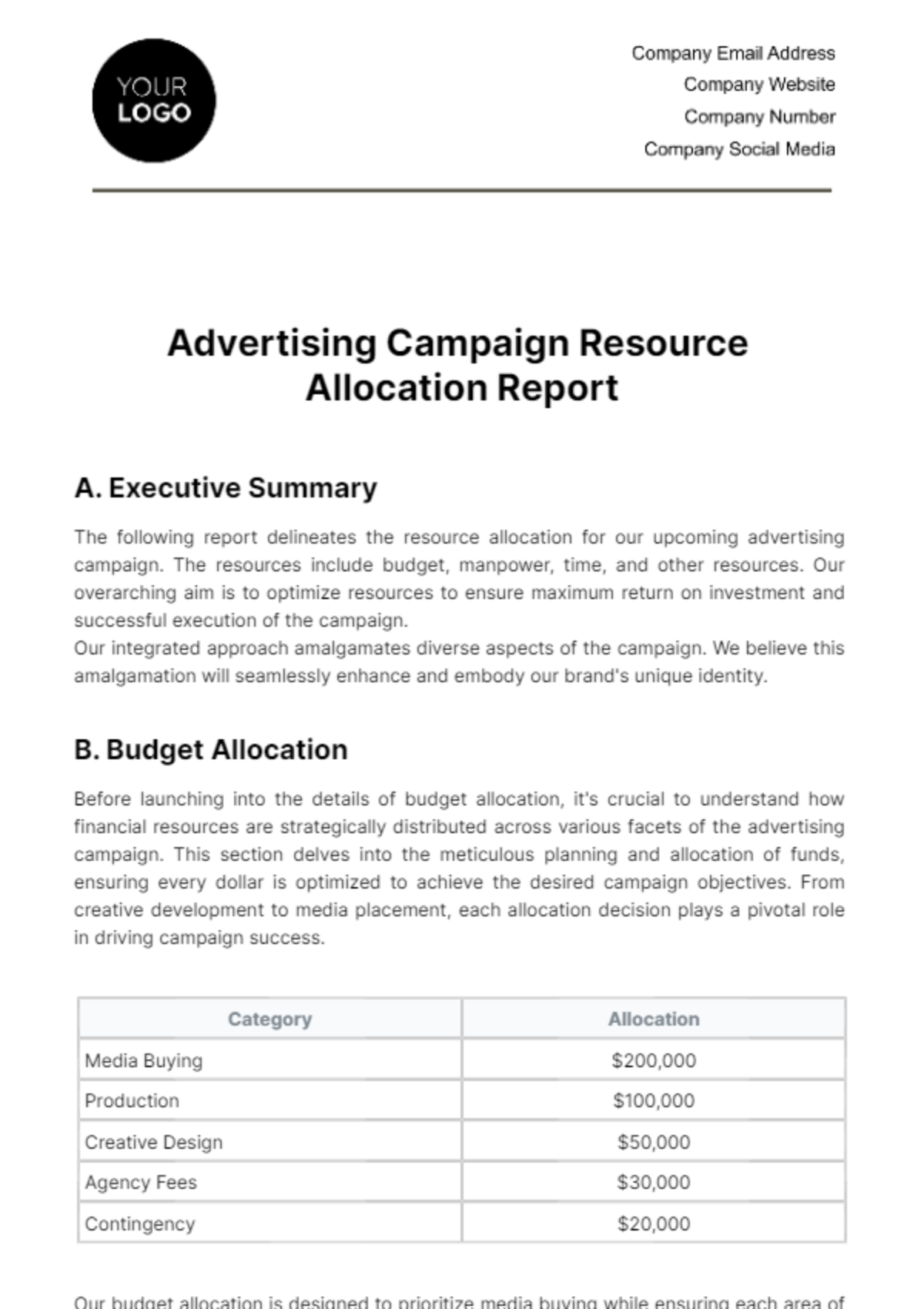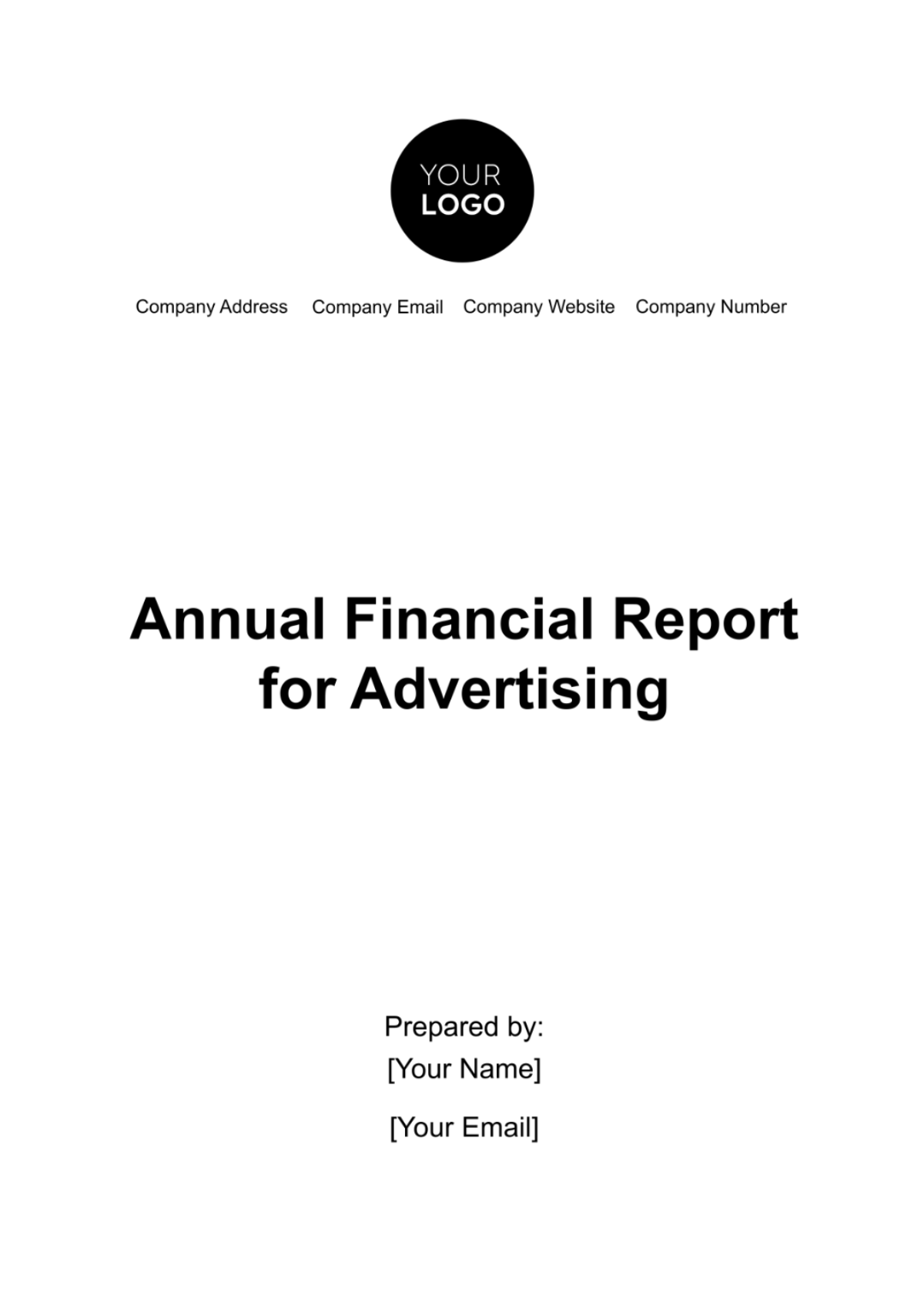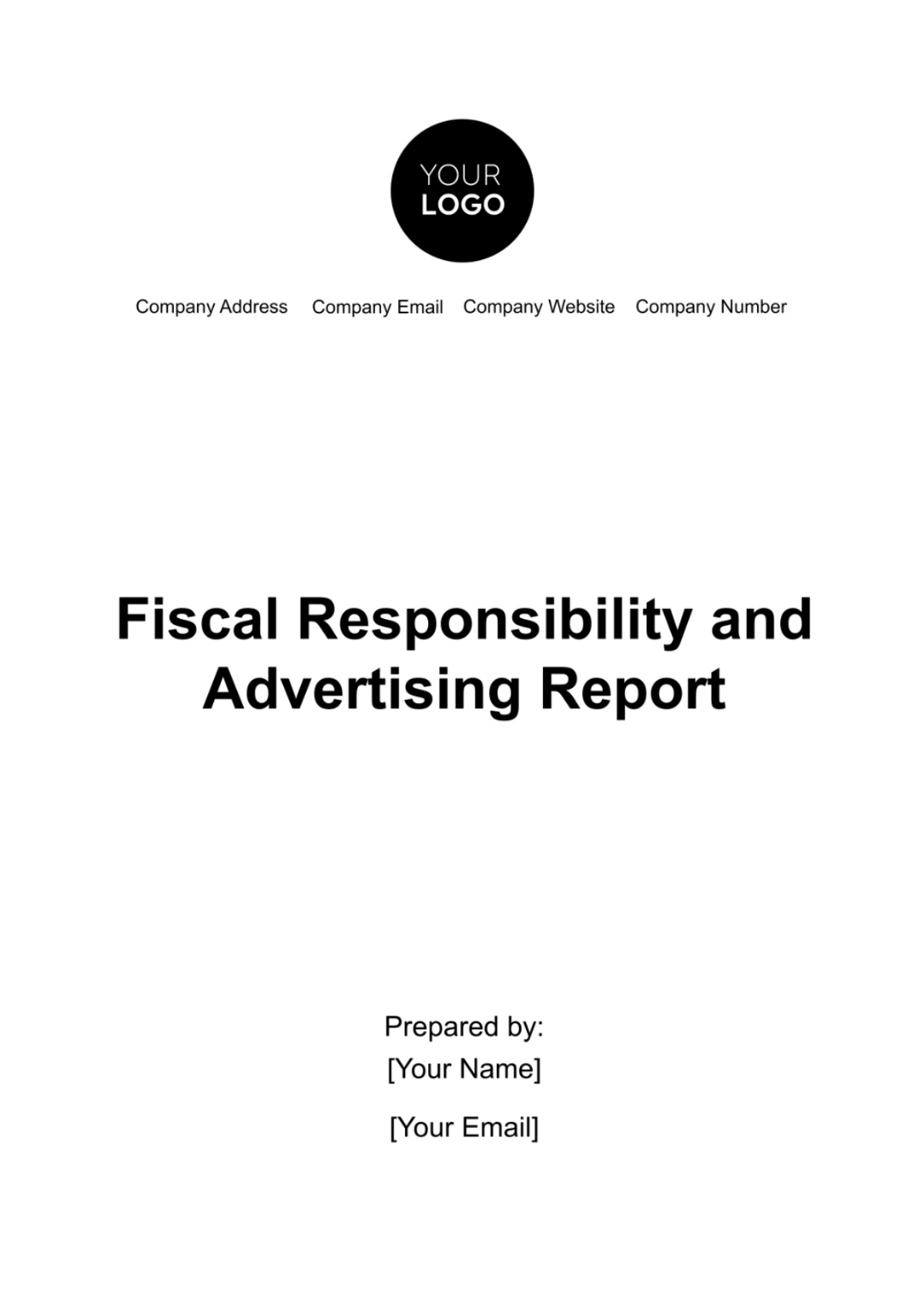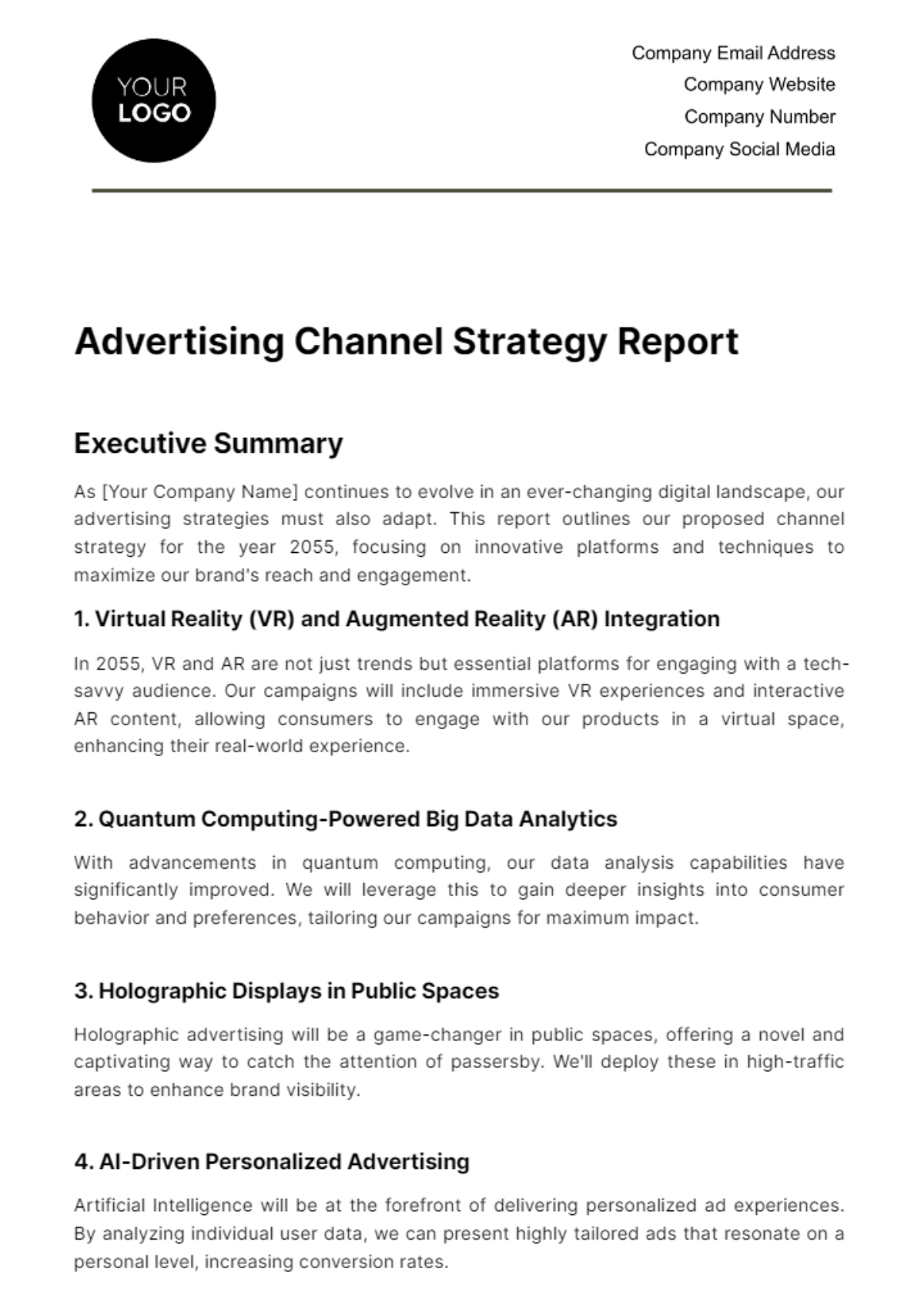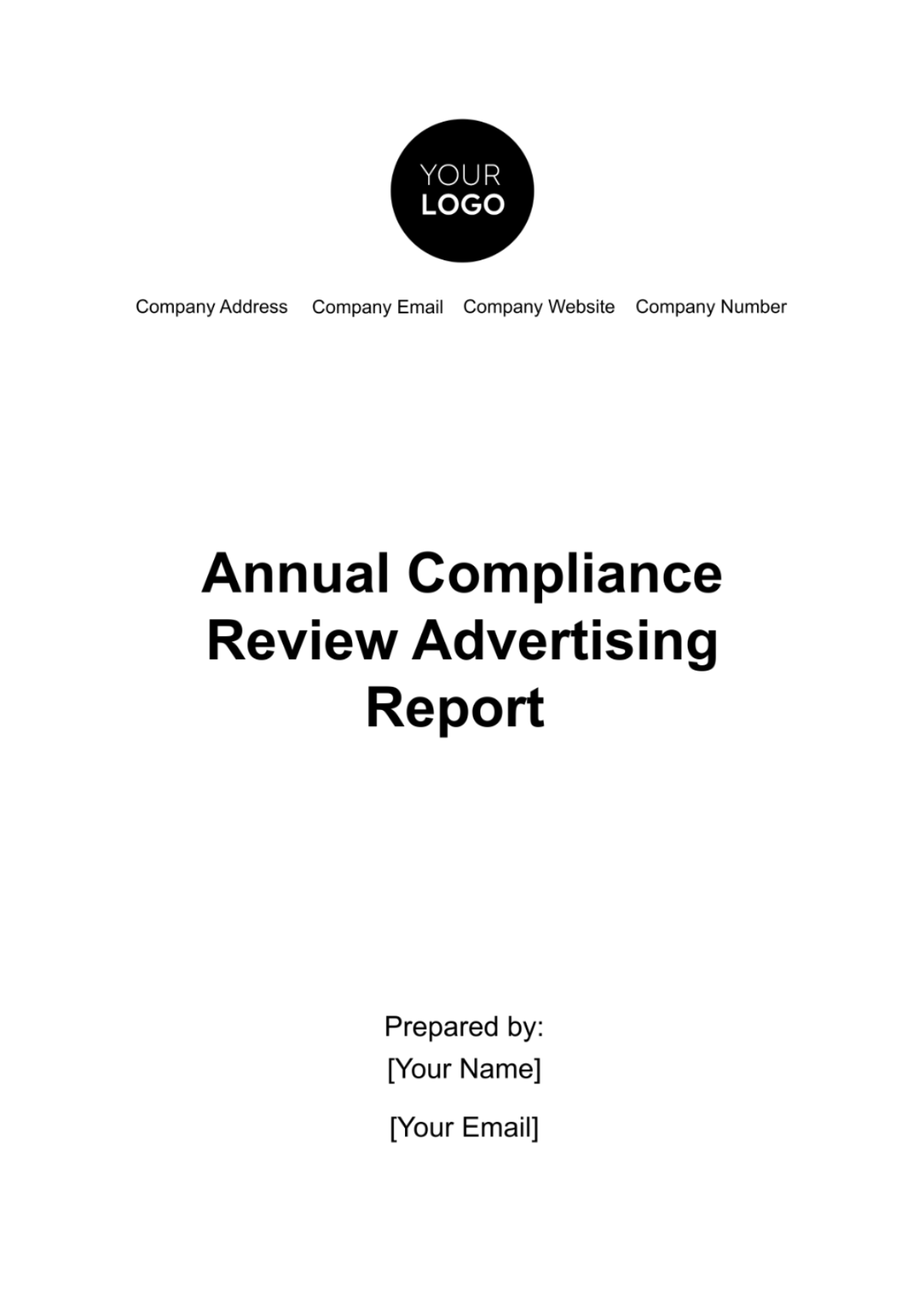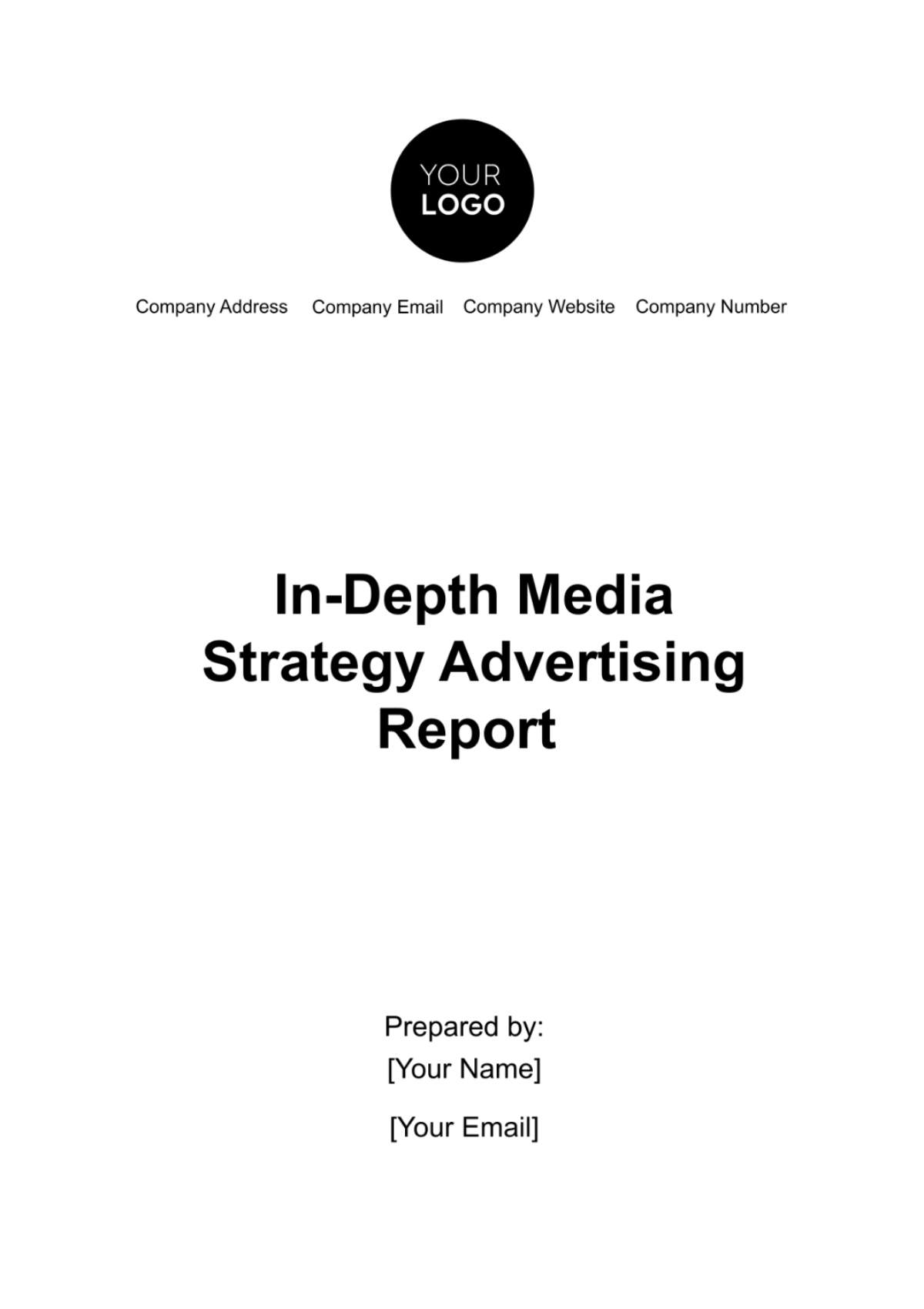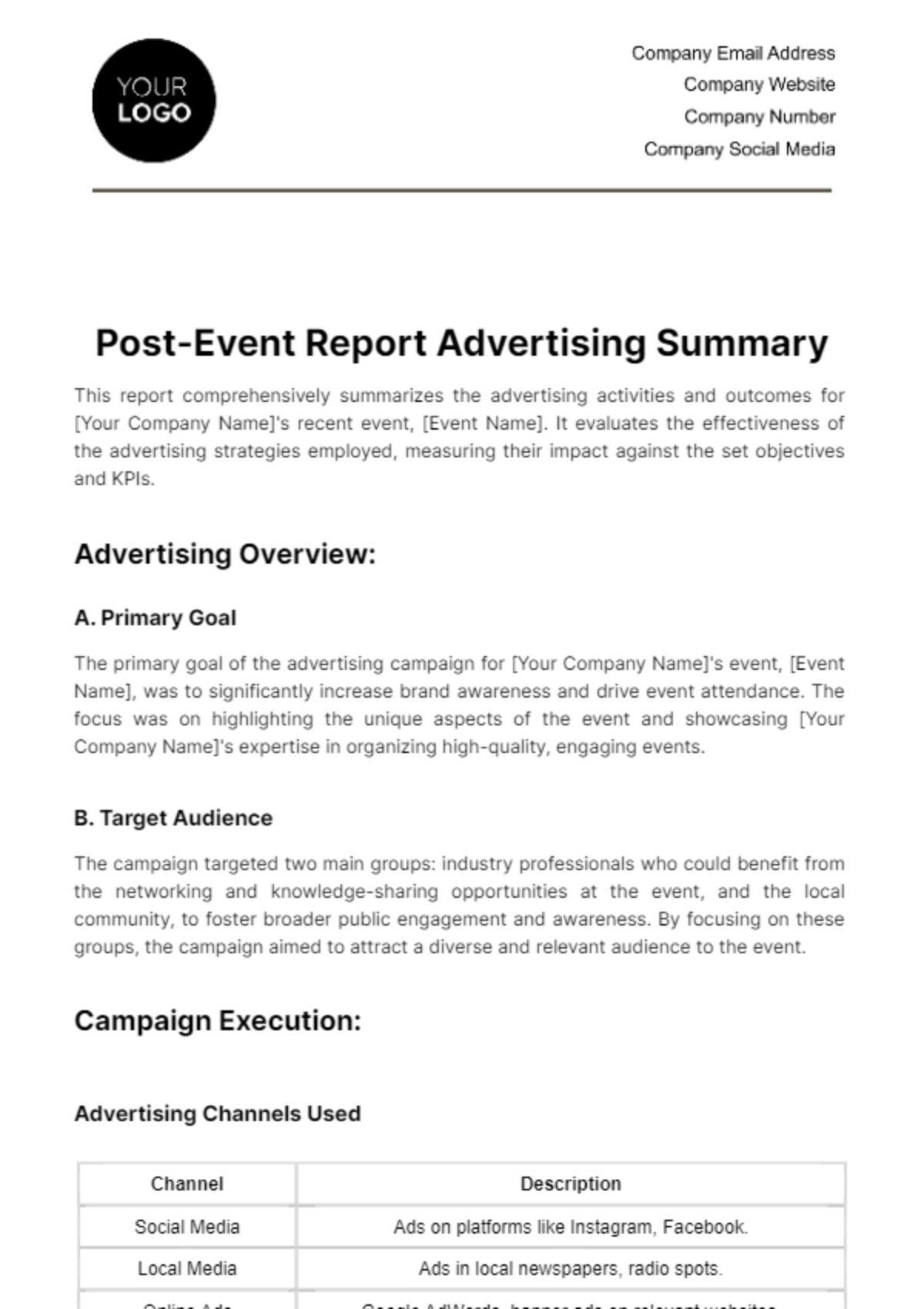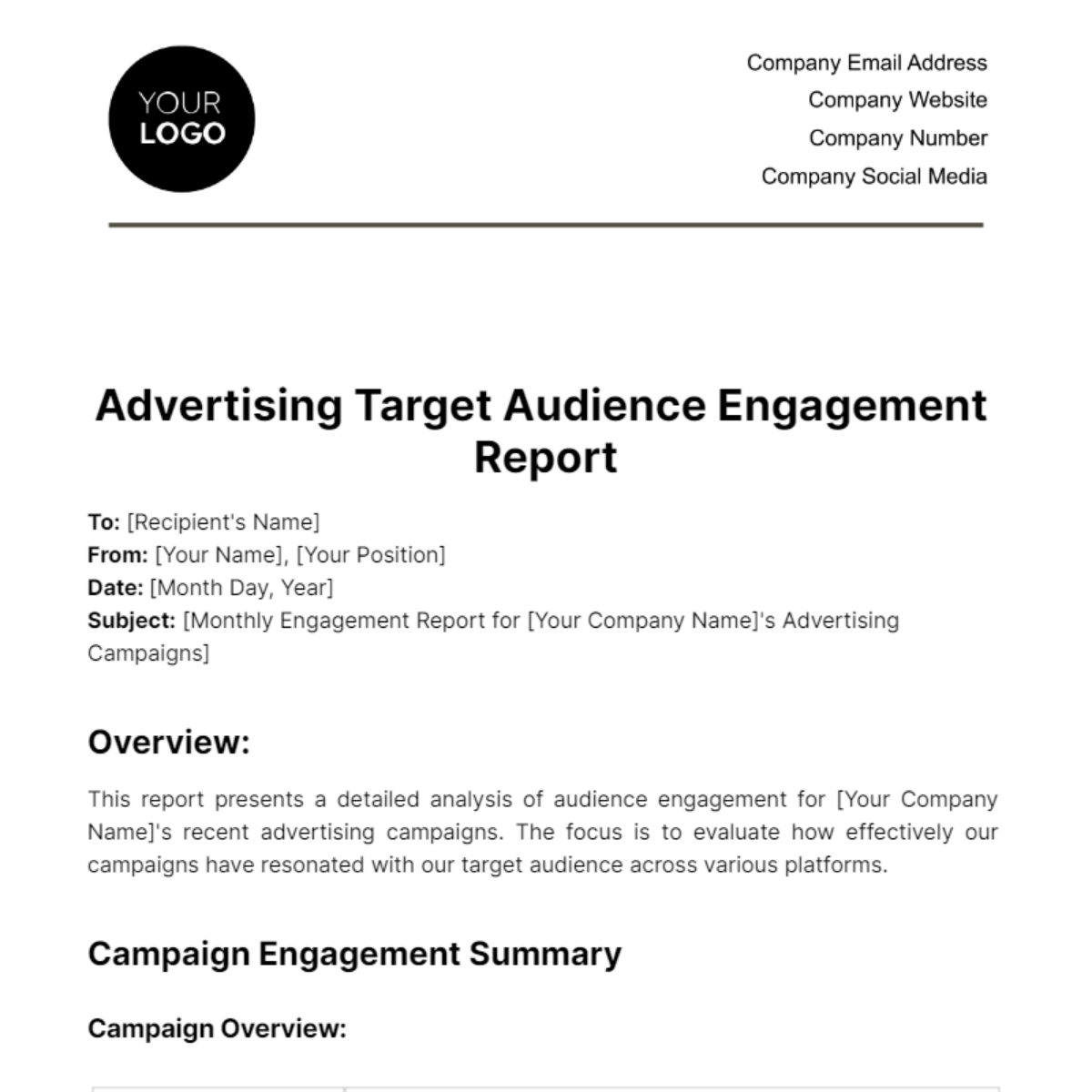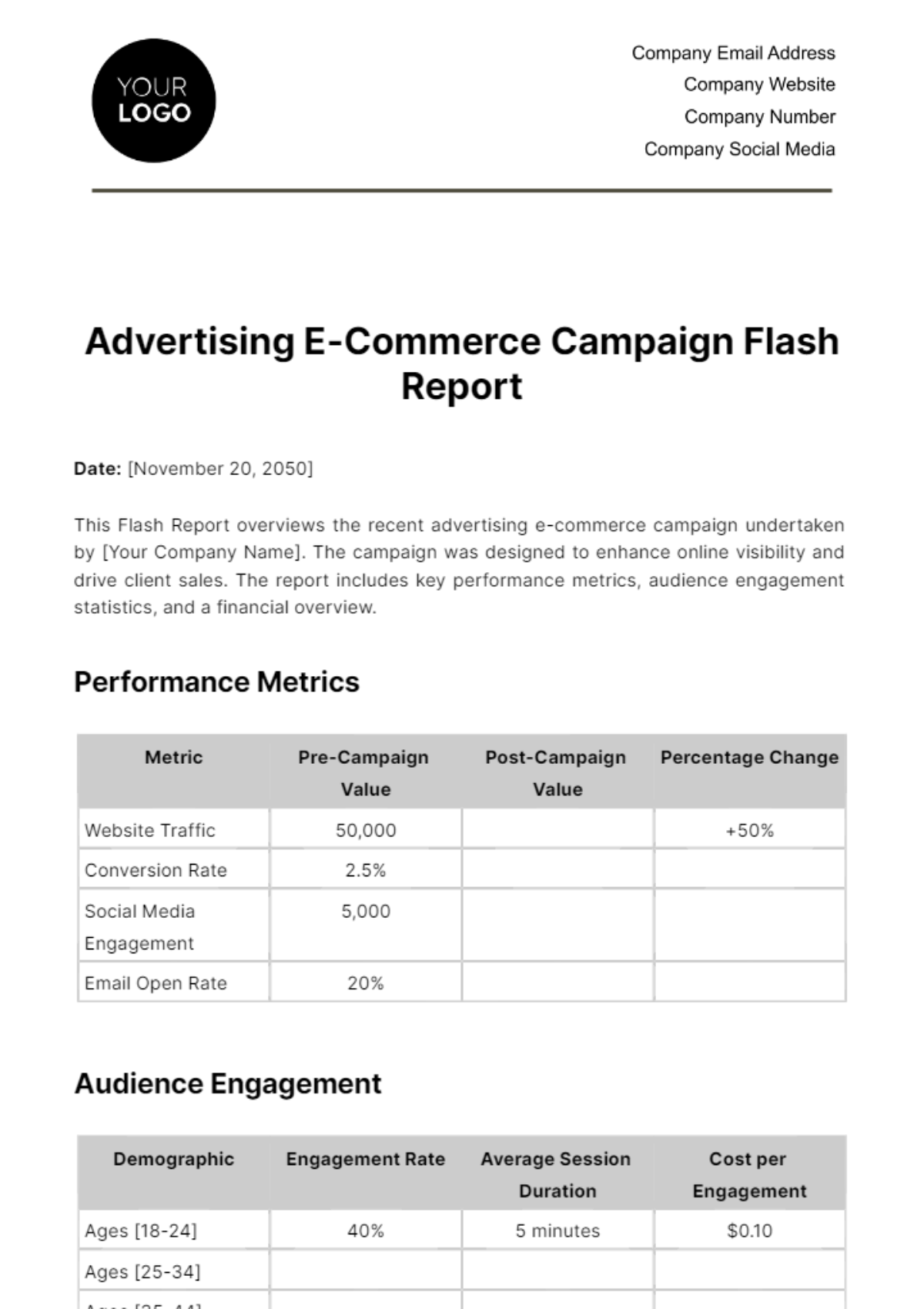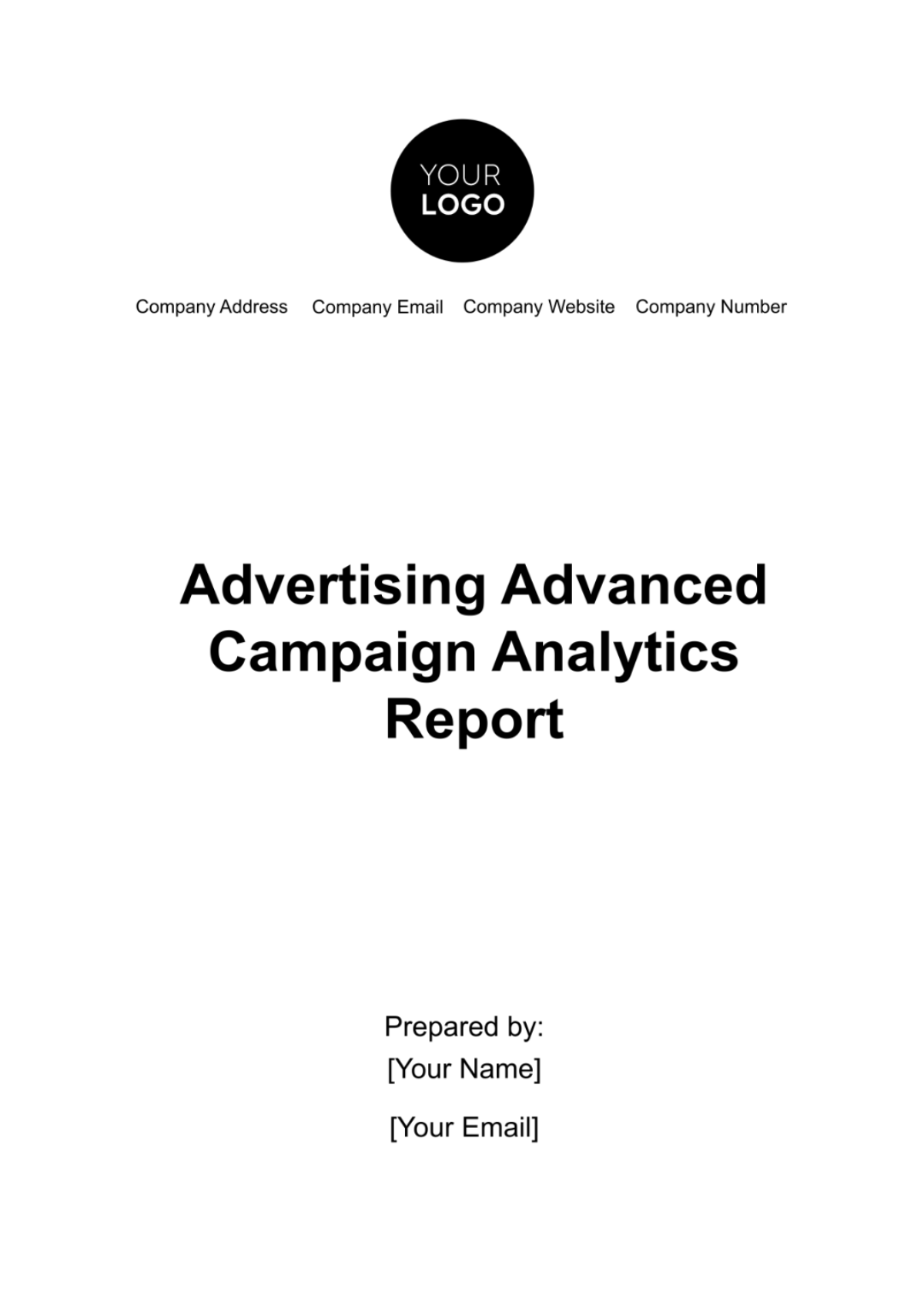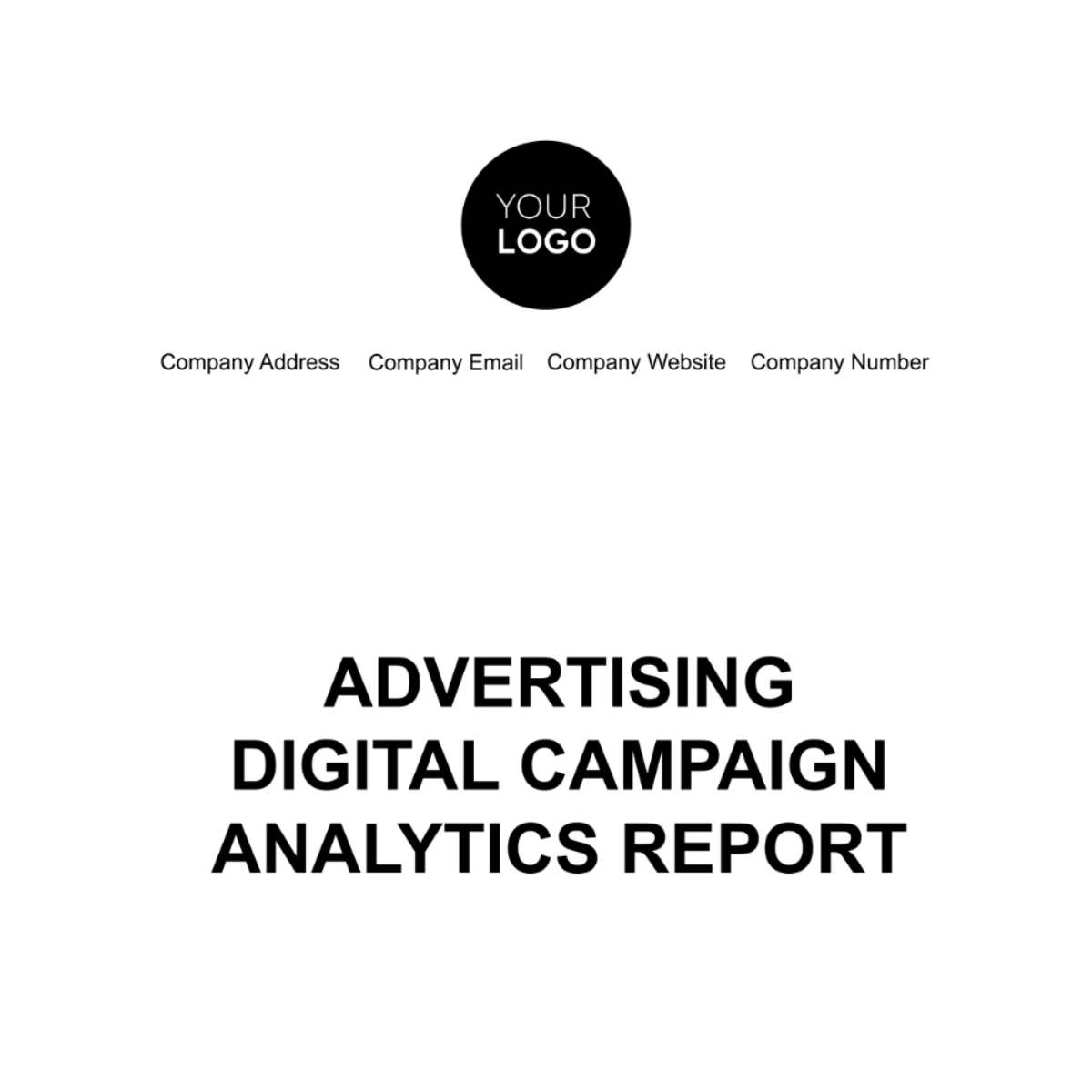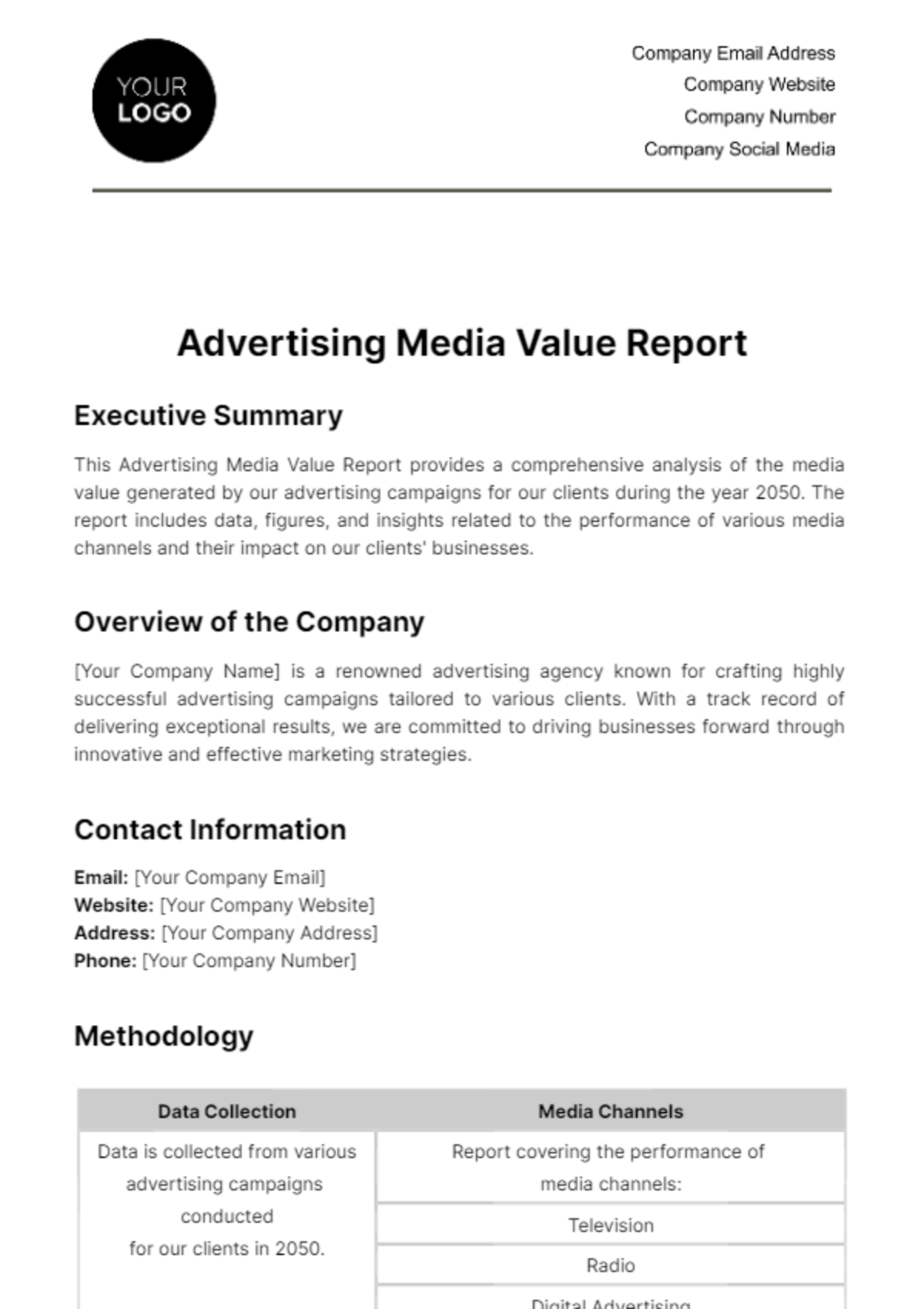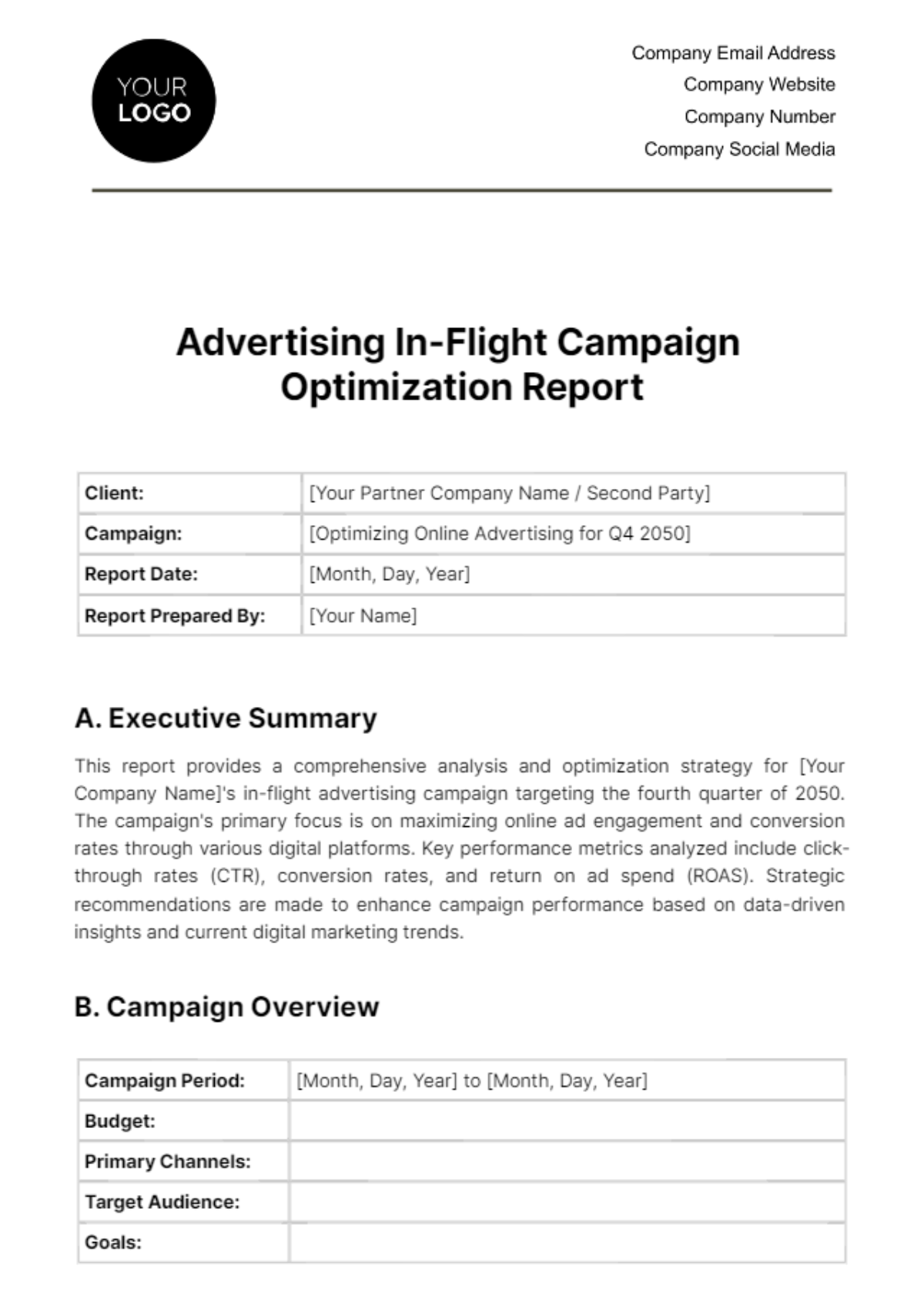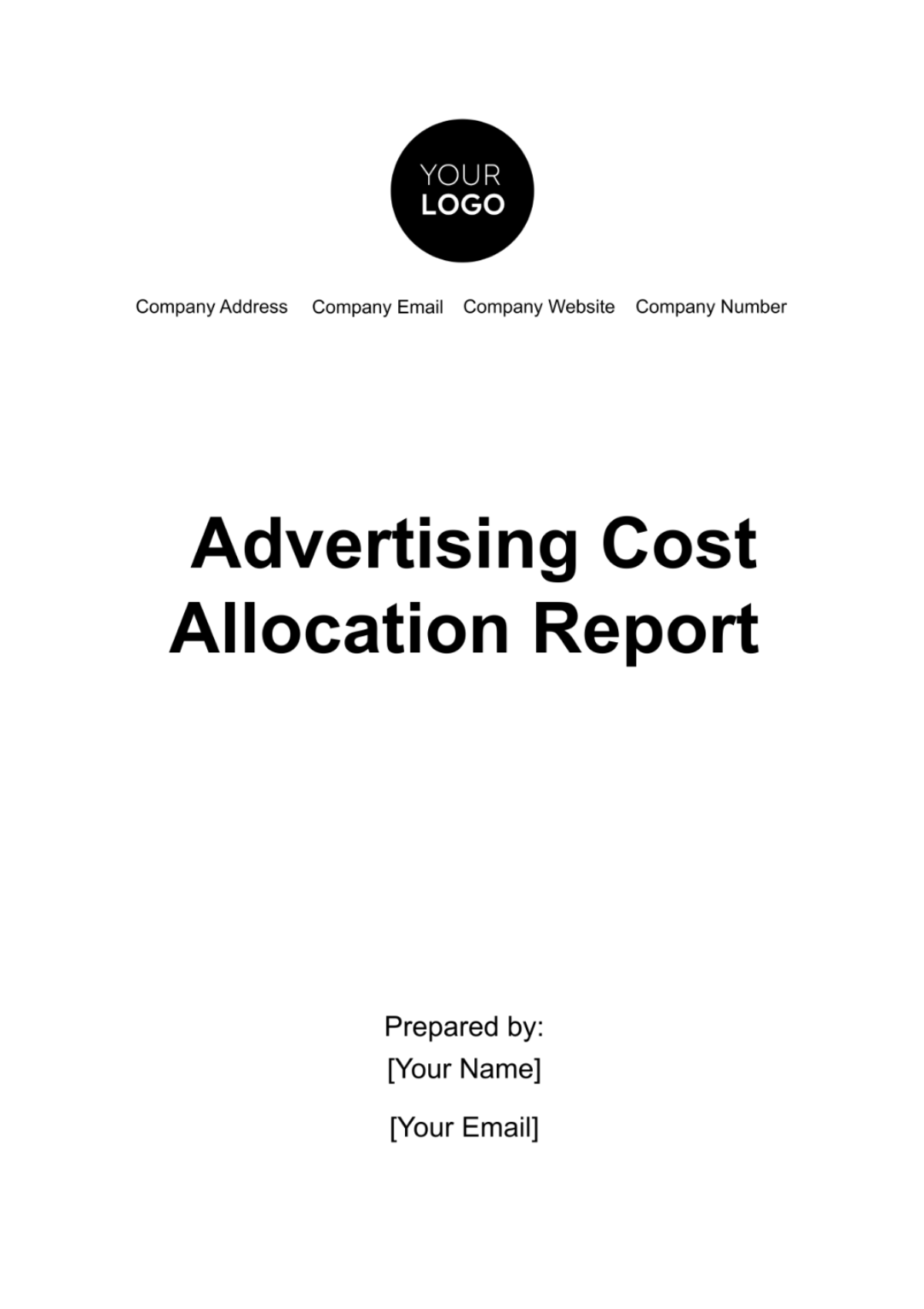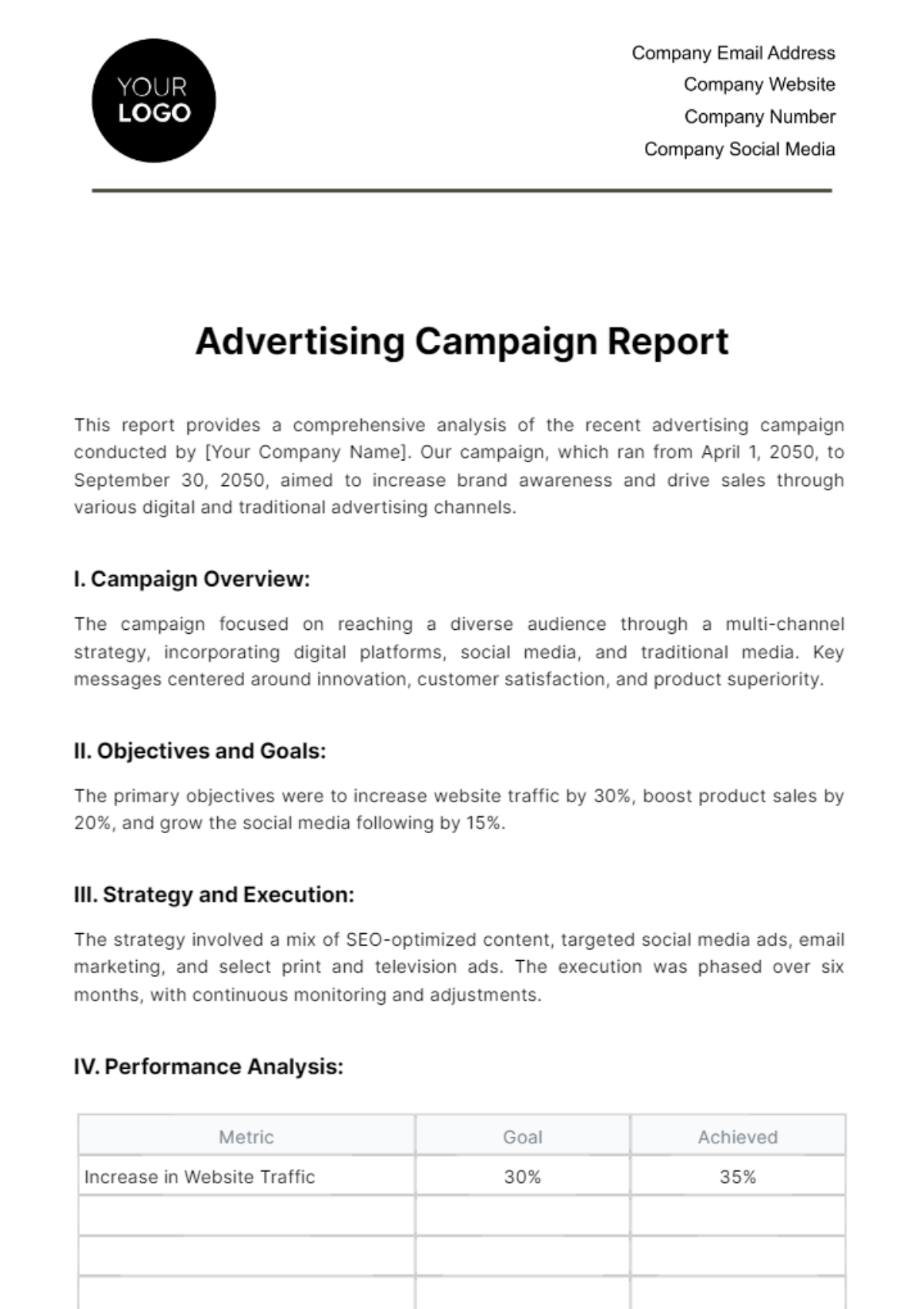Fiscal Responsibility and Advertising Report
I. Executive Summary
This Fiscal Responsibility and Advertising Report highlights our commitment to managing advertising expenditures with a keen eye on efficiency, effectiveness, and ethical considerations. Over the reporting period, we have scrutinized our advertising budget allocations across various campaigns and channels to ensure they align with our strategic objectives while upholding the principles of fiscal responsibility. Here are key findings:
Total advertising expenditure saw a 10% reduction from the previous period, reflecting our strategic cost-saving initiatives.
Digital advertising channels accounted for 60% of the budget, optimized for higher ROI.
Significant improvements in campaign ROI, particularly in digital and social media campaigns.
Enhanced compliance with advertising regulations and ethical standards.
II. Introduction
A. Purpose
The purpose of this Fiscal Responsibility and Advertising Report is to provide a comprehensive analysis of our advertising financial management practices. By examining the allocation, efficiency, and outcomes of our advertising budget, this report aims to demonstrate our commitment to fiscal responsibility in all advertising activities.
B. Scope
The report covers all advertising campaigns conducted over the last fiscal year, spanning digital, print, TV, and social media channels.
C. Importance of Fiscal Responsibility
Fiscal responsibility in advertising is crucial for ensuring that our marketing investments yield maximum returns while adhering to ethical standards and compliance requirements. By implementing rigorous budget oversight and efficiency measures, we aim to enhance our brand's value and reputation in the market.
III. Advertising Budget Overview
Our advertising budget is meticulously planned to align with our strategic marketing objectives, ensuring that each dollar spent contributes to our overarching goals of market penetration, customer engagement, and brand loyalty.
Campaign | Current Period Budget | Previous Period Budget | Percentage Change |
Digital Advertising | $1,200,000 | $1,000,000 | +20% |
Print Advertising | $300,000 | $500,000 | -40% |
TV Advertising | $400,000 | $450,000 | -11% |
Social Media | $600,000 | $550,000 | +9% |
Total | $2,500,000 | $2,500,000 | 0% (reallocation) |
The table illustrates our strategic shift towards digital and social media channels, acknowledging their growing importance in contemporary advertising strategies. This reallocation resulted in a 10% overall budget reduction, achieved by scaling back on traditional print and TV advertising expenditures. Despite the static total budget, our strategic reallocation and efficiency measures have led to a more effective distribution of funds, targeting areas with higher returns and engagement rates. This approach reflects our commitment to fiscal responsibility and adaptability in the face of changing market dynamics.
IV. Budget Allocation and Efficiency
A. Allocation Principles
Our approach to allocating the advertising budget is grounded in principles designed to maximize impact while ensuring fiscal responsibility. These principles guide our decision-making process, ensuring that funds are distributed in a manner that aligns with our strategic goals and market opportunities.
Strategic Alignment: Ensure all allocations directly support our overarching marketing and business objectives.
Market Responsiveness: Allocate more resources to channels and campaigns that are best suited to current market trends and consumer behaviors.
ROI Focused: Prioritize spending on channels and campaigns with a proven or projected high return on investment.
Flexibility: Maintain a degree of budget flexibility to capitalize on unforeseen opportunities or adjust to market changes.
Compliance and Ethics: Ensure all advertising activities comply with legal standards and reflect our commitment to ethical marketing.
B. Efficiency Analysis
An analysis of spending efficiency across various channels and campaigns is crucial for understanding how effectively our advertising budget is utilized.
Channel/Campaign | Budget Allocation | Measured Efficiency |
Digital Advertising | $1,200,000 | High |
Print Advertising | $300,000 | Moderate |
TV Advertising | $400,000 | Moderate |
Social Media | $600,000 | High |
Our investment in digital advertising and social media channels has shown high efficiency, attributed to their targeted reach and measurable impact on audience engagement. Despite the reduced budget for print and TV advertising, these channels continue to offer moderate efficiency, supporting brand awareness and reach within specific demographics. This evaluation underscores the importance of continuously monitoring spending effectiveness and adjusting allocations to optimize overall advertising impact.
V. Return on Investment (ROI) Analysis
Analyzing the return on investment for each advertising channel and campaign is critical for evaluating the financial efficacy of our advertising efforts.
Channel/Campaign | ROI |
Digital Advertising | 220% |
Print Advertising | 150% |
TV Advertising | 160% |
Social Media | 300% |
The ROI analysis reveals that social media campaigns yield the highest return, underscoring the value of investing in platforms where engagement is most measurable and impactful. Digital advertising also demonstrates a strong ROI, further validating our strategic shift towards online channels. While print and TV have lower ROI percentages compared to digital mediums, they remain vital components of our integrated marketing strategy, contributing to a diversified advertising approach that enhances brand awareness across different segments.
These ROI figures have a direct impact on our advertising sales, significantly boosting brand awareness and other key performance indicators such as customer engagement and market share. This analysis reinforces the need for a balanced and strategic approach to budget allocation, ensuring that investments are made in channels that offer the best returns while also supporting overall brand objectives.
VI. Compliance and Ethical Advertising
Adhering to compliance and ethical standards in our advertising efforts is paramount to maintain trust with our audience and uphold the integrity of our brand. Throughout the reporting period, we have rigorously ensured that our advertising campaigns align with both the letter and spirit of applicable laws and ethical guidelines.
Truth in Advertising: Ensured all advertisements are truthful, not misleading, and substantiated, in line with the Federal Trade Commission (FTC) guidelines.
Children's Online Privacy Protection Act (COPPA): Carefully targeted digital advertising to avoid collecting data from children under 13, respecting privacy concerns.
Endorsements and Testimonials: Followed FTC guidelines for endorsements, ensuring any endorsements or testimonials are honest and reflect genuine experiences.
Intellectual Property Rights: Respected copyright and trademark laws, ensuring all content is original or properly licensed.
Data Privacy and Security: Complied with data protection regulations, such as the General Data Protection Regulation (GDPR) and the California Consumer Privacy Act (CCPA), to protect consumer data privacy and security in our digital campaigns.
Non-Discrimination: Ensured our advertising practices do not discriminate against any group or individual, adhering to the principles of equality and inclusion.
VII. Challenges and Mitigation Strategies
During the reporting period, our advertising team faced several challenges that tested our adaptability and resilience. These challenges ranged from rapidly changing market dynamics to increased regulatory scrutiny and shifting consumer behaviors due to global events.
Market Dynamics: The fast-paced evolution of the digital advertising landscape required us to continuously adapt our strategies to stay ahead. We responded by increasing our investment in digital marketing analytics and training, enabling us to respond more swiftly to market trends.
Regulatory Changes: With the introduction of new data privacy laws and advertising regulations, we had to navigate a more complex legal environment. We strengthened our legal and compliance teams and established more rigorous internal review processes for all advertising materials before launch.
Consumer Behavior Shifts: The global events led to significant changes in consumer behavior, preferences, and spending patterns. We mitigated this by conducting more frequent and detailed market research, allowing us to adjust our advertising messages and channels to better align with current consumer needs and sentiments.
Budget Constraints: Despite a tight budget, the need to maximize the impact of every dollar spent became even more critical. We addressed this by reallocating resources towards high-performing channels, optimizing campaign designs for cost efficiency, and negotiating more favorable terms with media partners.
VIII. Future Outlook and Recommendations
Looking ahead, we anticipate a dynamic advertising landscape, with evolving consumer behaviors and technological advancements shaping our strategies. To continue our commitment to fiscal responsibility while maximizing advertising effectiveness, we recommend the following strategic actions:
Invest in Emerging Technologies: Explore and invest in new advertising technologies such as AI and machine learning for better targeting and personalization.
Enhance Digital Presence: Further enhance our digital and social media presence, leveraging these platforms' growing influence on consumer decisions.
Sustainability Focus: Integrate sustainability more deeply into our advertising narratives, aligning with consumer expectations for environmentally and socially responsible brands.
Data Privacy Prioritization: Continue prioritizing consumer data privacy, staying ahead of regulatory changes and building consumer trust.
Agility in Strategy: Maintain strategic agility, allowing for quick pivots in response to market changes or unforeseen challenges.
IX. Conclusion
This Fiscal Responsibility and Advertising Report underscores our steadfast commitment to managing our advertising efforts with a focus on efficiency, effectiveness, and ethical standards. Despite the challenges faced during the reporting period, our strategic responses and adaptability have not only upheld but also enhanced our brand's reputation and market position. As we move forward, we remain dedicated to exploring new opportunities, investing in innovative technologies, and fostering a deeper connection with our audience. By adhering to our principles of fiscal responsibility and ethical advertising, we are confident in our ability to navigate the future landscape and achieve sustained success.



